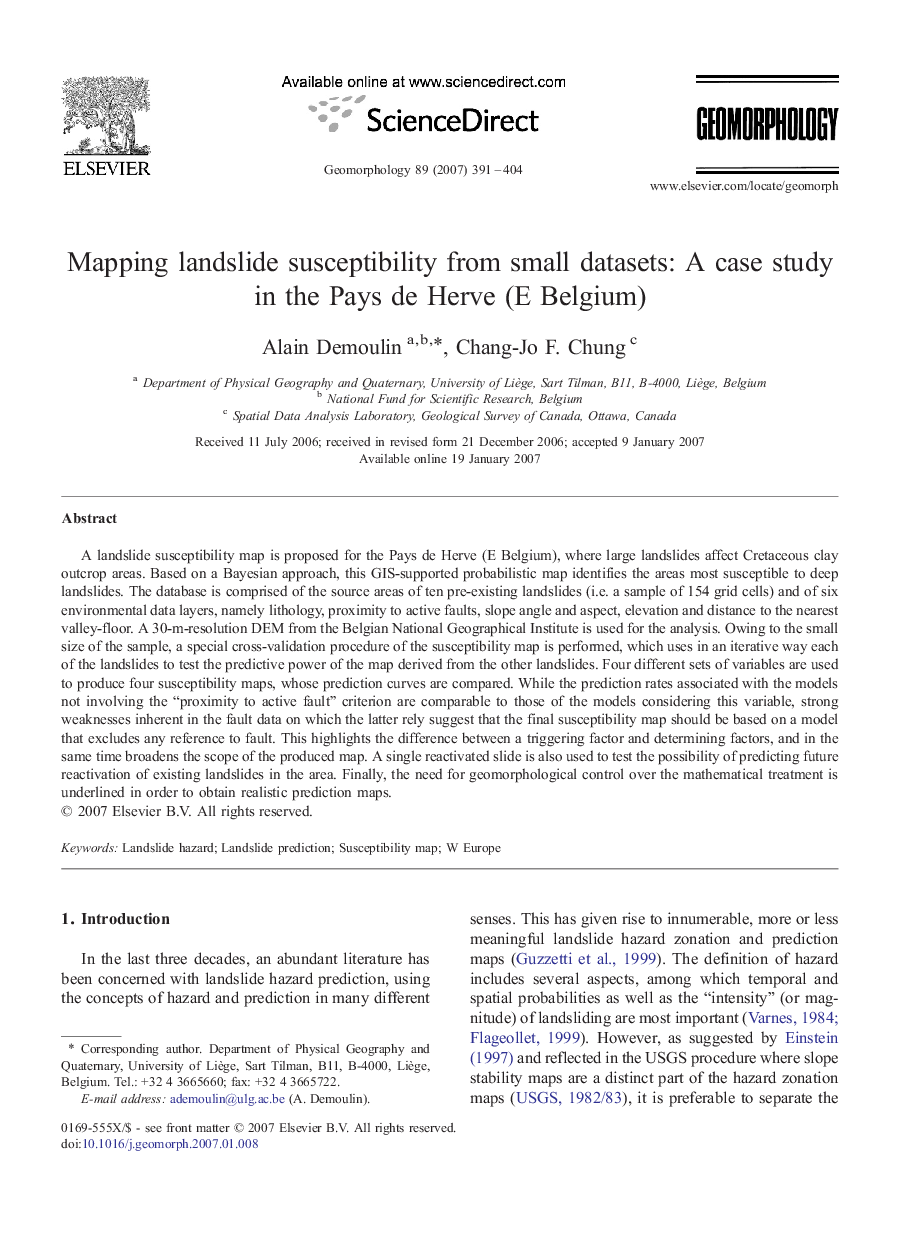| Article ID | Journal | Published Year | Pages | File Type |
|---|---|---|---|---|
| 4687191 | Geomorphology | 2007 | 14 Pages |
Abstract
A landslide susceptibility map is proposed for the Pays de Herve (E Belgium), where large landslides affect Cretaceous clay outcrop areas. Based on a Bayesian approach, this GIS-supported probabilistic map identifies the areas most susceptible to deep landslides. The database is comprised of the source areas of ten pre-existing landslides (i.e. a sample of 154 grid cells) and of six environmental data layers, namely lithology, proximity to active faults, slope angle and aspect, elevation and distance to the nearest valley-floor. A 30-m-resolution DEM from the Belgian National Geographical Institute is used for the analysis. Owing to the small size of the sample, a special cross-validation procedure of the susceptibility map is performed, which uses in an iterative way each of the landslides to test the predictive power of the map derived from the other landslides. Four different sets of variables are used to produce four susceptibility maps, whose prediction curves are compared. While the prediction rates associated with the models not involving the “proximity to active fault” criterion are comparable to those of the models considering this variable, strong weaknesses inherent in the fault data on which the latter rely suggest that the final susceptibility map should be based on a model that excludes any reference to fault. This highlights the difference between a triggering factor and determining factors, and in the same time broadens the scope of the produced map. A single reactivated slide is also used to test the possibility of predicting future reactivation of existing landslides in the area. Finally, the need for geomorphological control over the mathematical treatment is underlined in order to obtain realistic prediction maps.
Related Topics
Physical Sciences and Engineering
Earth and Planetary Sciences
Earth-Surface Processes
Authors
Alain Demoulin, Chang-Jo F. Chung,
